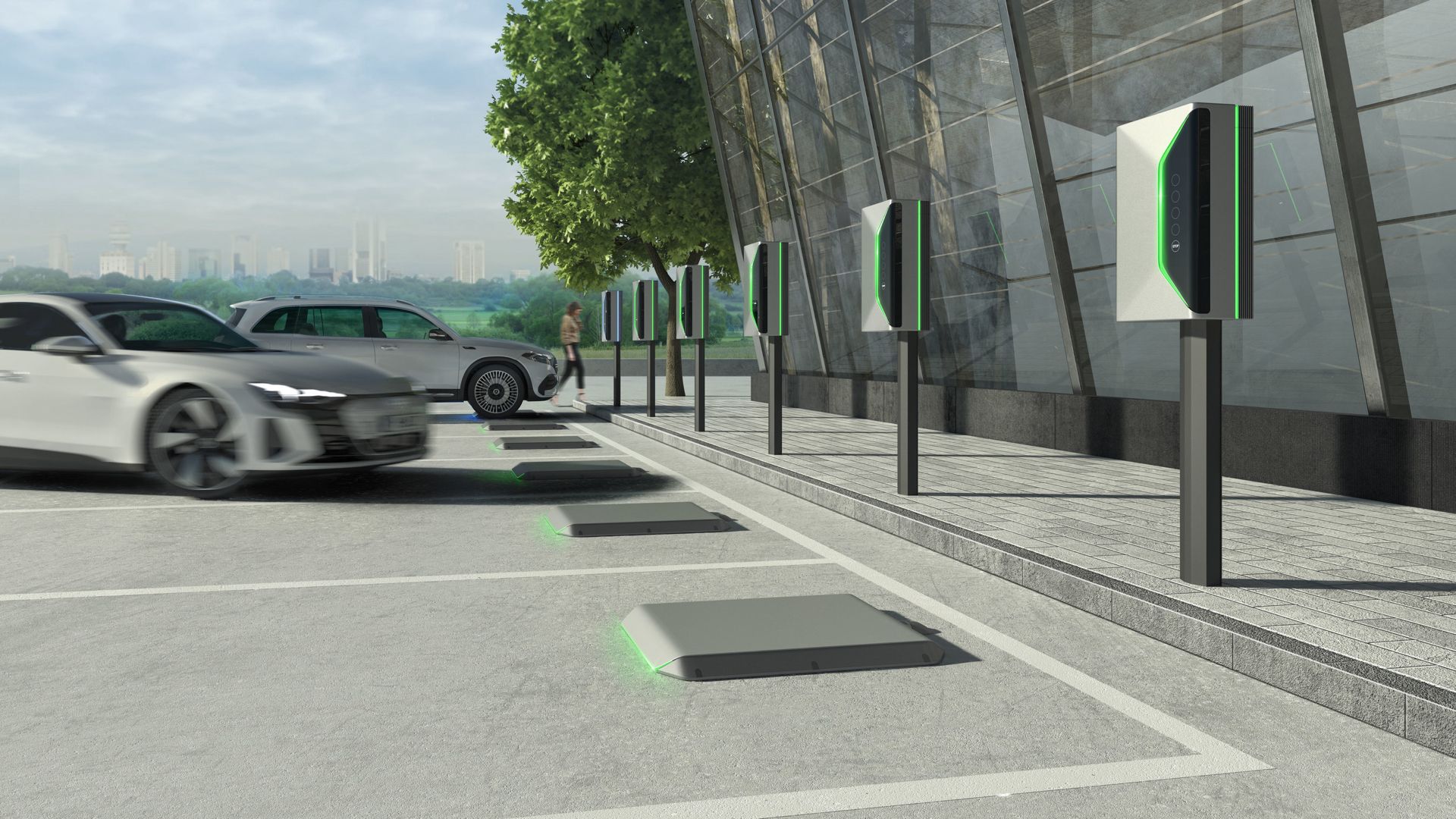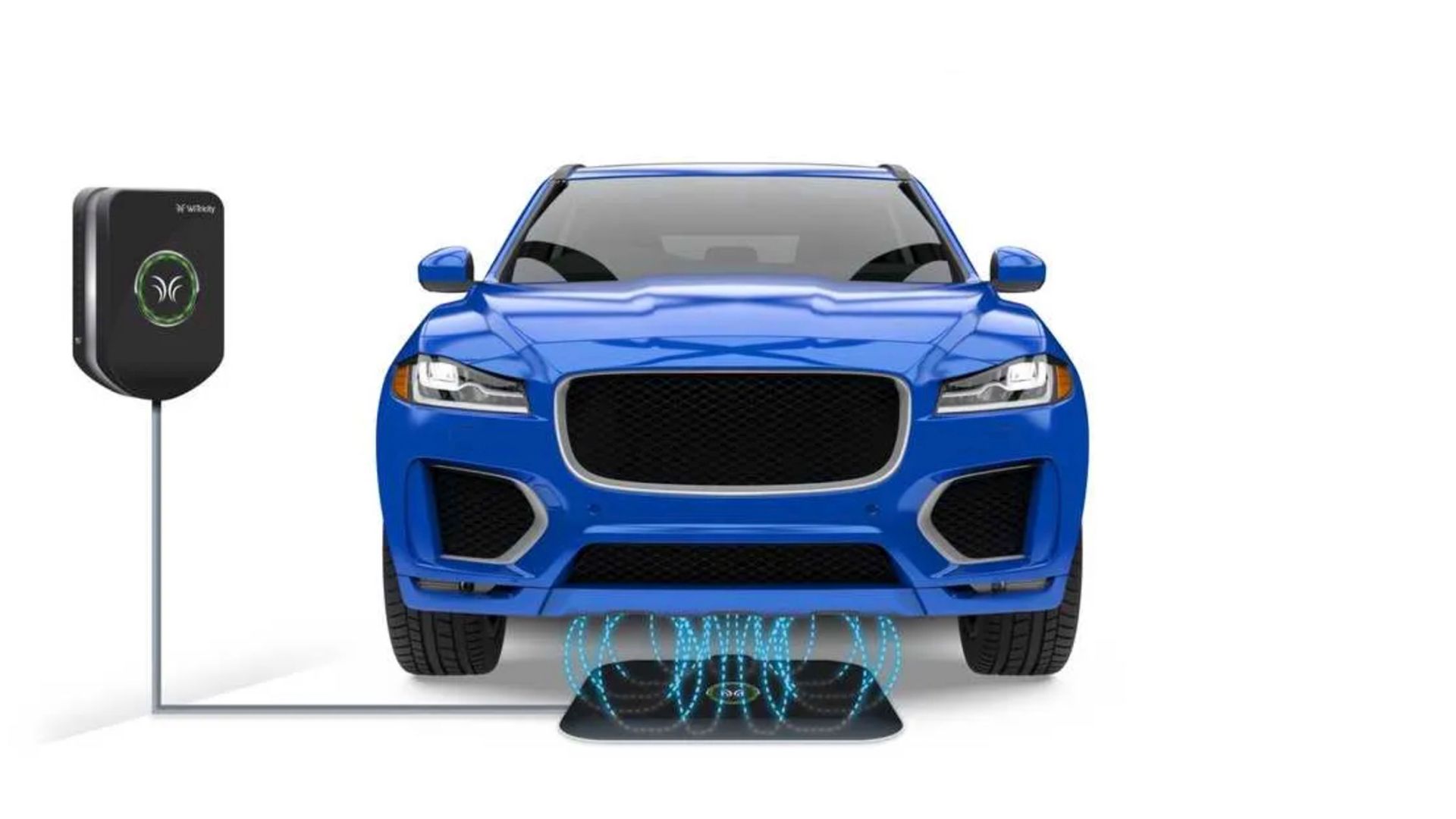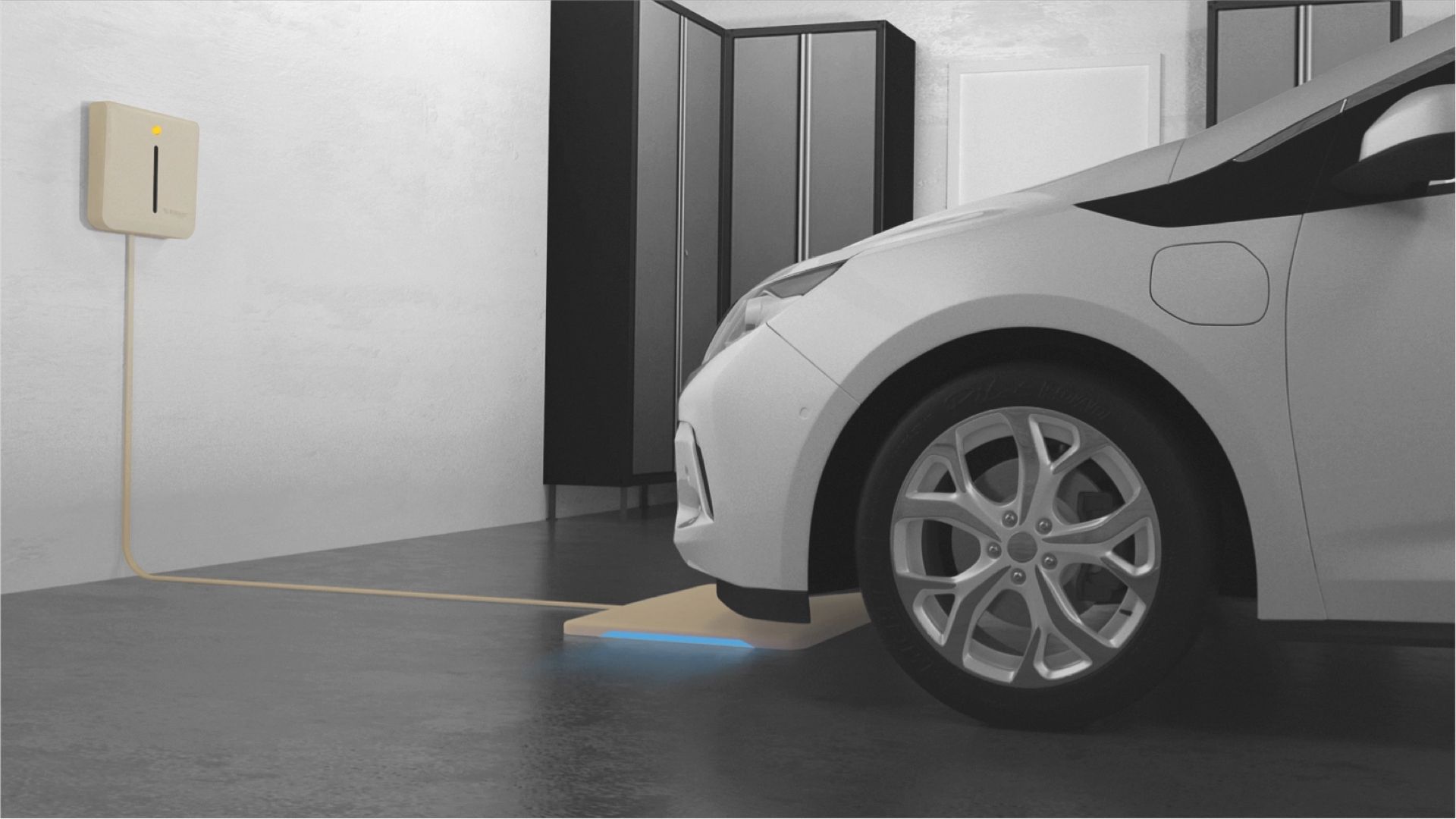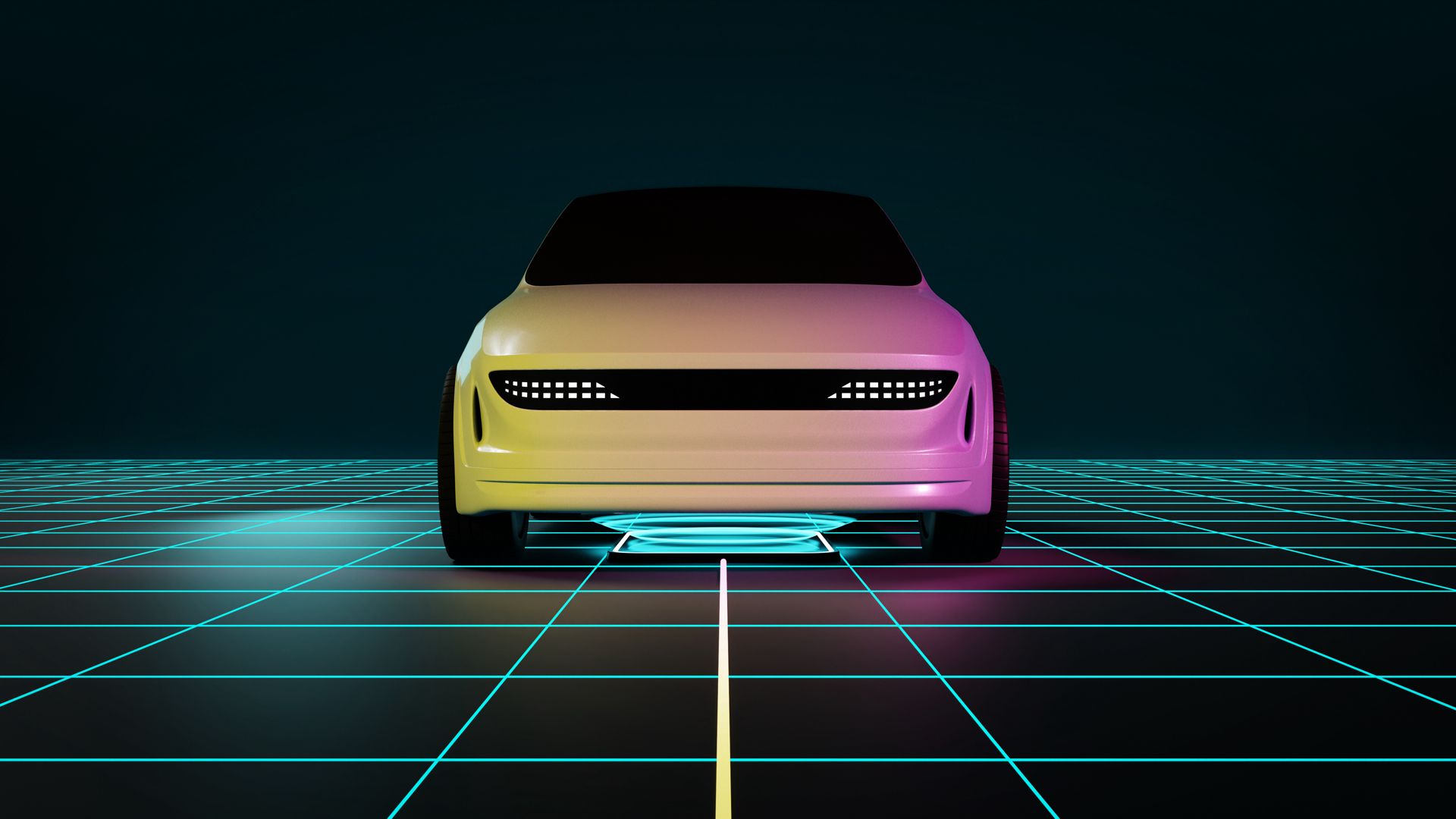Quick Links
Imagine parking your electric vehicle, walking off, and returning to a full or partially-charged battery without plugging it in. Similar to wireless charging on phones, brands and manufacturers are working on wireless EV charging. And while it sounds like a futuristic dream, it actually already exists.
Being able to drive an electric vehicle without ever having to stop for gas is great, but dealing with charging stations, networks, charging speeds, and plug types kind of takes the excitement out of the idea. Imagine not having to stop for gas or plug your vehicle in. Instead, it always has some juice and charges wirelessly anywhere and everywhere you go. Sounds nice, right?
It's an idea most EV owners can get behind, and it could become a reality everywhere sooner than you think.
How Wireless EV Charging Works
Wireless EV charging works by ditching the cable the same way it works on your smartphone. So how does that work? Wireless charging uses electromagnetic induction to transmit electrical power. An electric current is sent through a magnetic coil, creating a magnetic field that generates another electric current in the second coil. That electric current can charge a phone or charge the battery to power an EV. Another term you'll often see is "inductive charging."
Similar to how smartphones have a magnetic coil on the inside and sit on a wireless charging pad (one with another magnetic coil inside) your electric vehicle can one day do the same thing. Electricity is transferred from one magnetic coil in the charger to a second magnetic system on the vehicle's underside.
The technology isn't anything new, either, and it's slowly gaining traction as EVs explode in popularity. Qualcomm's Halo system is the first that comes to mind, dating back to 2012, and it sold the technology to WiTricity in 2019. Furthermore, late last year, the UK company Char.gy started field tests and trials for a similar wireless EV charging platform. You can find them in select locations in London. Or, PluglessPower is one of the first production options in Europe.
You'll still see a traditional EV charging station, but instead of dealing with a plug, all owners need to do is drive over the charging pad on the ground. Or, more realistically, in their garage.
How Efficient Is Wireless EV Charging?
According to big brands working on the technology, like WiTricity and Char.gy, wireless EV charging is often just as fast and efficient as a plug. For example, many EV plugs have an efficiency rating of around 80%, and some best-in-class charging systems get upwards of 95% efficiency. That's when you factor in the grid, storage, conversion, plugs, and everything else.
According to WiTricity, its wireless EV chargers are anywhere from 90-93%, meaning you're not losing any power in the process. It's also reasonably fast and on par with most home chargers.
These systems can recharge your vehicle by delivering up to 11+ kW of charging power, which, depending on the vehicle model, are essentially level 2 charging speeds. So the same charging speeds you get at home could work wirelessly.
Furthermore, when Qualcomm was touting Halo before it sold the technology, it reached upwards of 22 kW, and no technological limitation prevents it from going higher. WiTricity and others could offer fast charging at home, offices, parking lots, and more. Just don't expect Tesla-style supercharger speeds anytime soon.
When Could We See Wireless EV Charging in the US?
So, is wireless EV charging a pipe dream, or is it a reality we'll eventually see in the United States? Well, it's already available in some parts of Europe, South Korea launched its first vehicle with the technology this year, the Genesis GV60, and more are coming.
Unfortunately, the Genesis GV60 recently went on sale in North America, but it doesn't support wireless EV charging, at least not yet.
So far we've only seen one EV with wireless charging as a factory option stateside, the BMW 530e hybrid sedan. It's not a new EV, but it's laying the groundwork for others. In fact, WiTricity has licensing agreements and partners scattered throughout the automotive space. We're talking about Toyota, BMW, Aptiv, and Nissan, and a few years ago, GM wanted to test WiTricity technology too.
At this point, it's only a matter of time until we start seeing more movement on this front in the United States. Earlier this summer, Siemens invested $25 Million in WiTricity, hoping to help drive the adoption of open, interoperable standards in wireless charging for EVs around the globe.
Car makers are busy working as fast as possible to ramp up production, take on Tesla, improve technology and driving ranges, and improve the physical battery cells themselves. Once EVs become more mainstream, wireless EV charging will be the next big push.
Inductive Charging Roads & Highways
We also briefly want to mention another form of wireless or inductive EV charging. Being able to charge wirelessly while parked at home or your office is great, but you still have to rely on vehicles being stopped to get more battery power.
Eventually, we could see wireless EV charging built into the roadways. That way, your electric vehicle could always be charging and never run out of battery, and we'd really feel like we're living in the future. Something that major is still a pipedream, but it's a dream they're working towards nonetheless.
Inductive charging built right into the road works similarly to regular wireless EV charging. Still, it does require a different system, bigger coils, and more power output to keep the charges flowing. Early tests show it working even at speeds upwards of 65+ MPH. It's a massively expensive idea, and that's before you consider ripping up and rebuilding roadways.
Automaker Stellantis is working on a solution to build wireless EV charging into select roads, so your car can charge as you drive, and they aren't the only ones. In September, the state of Michigan, MDOT, and Electreon partnered to create the first wireless EV charging roadway in the United States. It's a small 1-mile road in Detroit, but it'll be available to the public. So if you eventually have a vehicle that supports the technology, you'll get a little juice for that one-mile drive.
Another thing you'll want to think about is autonomous vehicles. Tesla, GM, Ford, and everyone else wants to create the next wave of self-driving cars. However, one huge limitation of autonomous EVs is charging. There's still a human element for physically plugging in the vehicle.
If the future discussed above becomes a reality, it'll be one of several steps required before vehicles can ultimately be autonomous. They'll charge at any parking stall and eventually even charge as they drive us from point A to B.
For now, I'll just settle for improved range, faster charging, and more affordable EVs.




